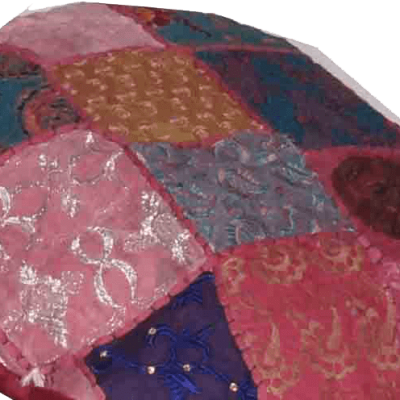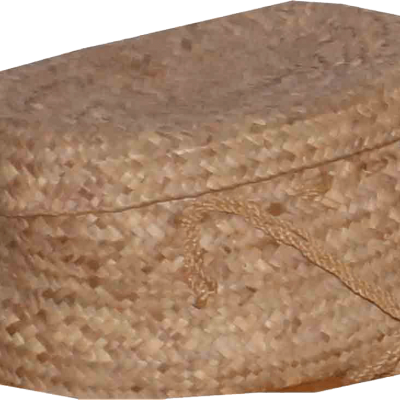So the LiveData can keep track of UI elements for which elements they have updated. Have a look at the following chart for the activity lifecycle of the fragment. This article walks you through how to use fragments in Android app development. You’ll learn how to approach your design in a modular fashion, use multiple instances of the same fragment in your UI, and pass data to your fragments with bundles. The savedInstanceState parameter is a Bundle that provides data about the previous instance of the Fragment.
In this android example tutorial, we will see how to create a fragment and add to the activity in Android Studio by using Kotlin Language. In this example we create two Fragments and load them on the click of Button’s. We display two Button’s and a FrameLayout in our Activity and perform setOnClickListener event on both Button’s. In the both Fragment’s we display a TextView and a Button and onclick of Button we display the name of the Fragment with the help of Toast.
JAVASCRIPT
Android fragment lifecycle is affected by activity lifecycle because fragments are included in activity. Android Fragment is the part of activity, it is also known as sub-activity. Now we create a fragment by right click on your package folder and create classes and name it SimpleFragment and add the following code. Add a FrameLayout to your activity to hold the parent fragment. With current versions of the Android Support package — or native fragments on API Level 17 and higher — you can nest fragments, by means of getChildFragmentManager().
The inflate() method has three arguments first one is the resource layout which we want to inflate, second is the ViewGroup to be the parent of the inflated layout. By using Fragments we can comprise multiple Fragments in a single Activity. Fragments have their own events, layouts and complete life cycle.
Android Social
This is called when the fragment becomes active or interactive. Method NameDescription onAttachIt is called once, when the fragment is attached to the activity. OnCreateThe system calls this method when a fragment How To Become A Project Manager At A Tech Company is created. This is an important method and you should implement the essential components of the fragment in this method. OnCreateView()This method is called when the UI of the fragment has to be initialised.
- Here we will design the basic simple UI by using TextView and Button in both xml’s.
- Android devices exists in a variety of screen sizes and densities.
- Step 2 − Add the following code to res/layout/activity_main.xml.
- With current versions of the Android Support package — or native fragments on API Level 17 and higher — you can nest fragments, by means of getChildFragmentManager().
- I am easily able to see how the basics work and now I can implement this into my application.
- More importantly, I hope it has shown you some of the possible uses of fragments and the potential they offer for smarter app design.
For performing these operations we need a Layout in xml file and then replace that layout with the required Fragment. While performing Fragment Transaction we can add a Fragment into back stack that’s managed by the Activity. Back stack allow us to reverse a Fragment transaction on pressing Back button of device. For Example if we replace a Fragment and add it in back stack then on pressing the Back button on device it display the previous Fragment. Fragments can be added inside other fragments but then you will need to remove it from parent Fragment each time when onDestroyView() method of parent fragment is called. For example, GMAIL app is designed with multiple fragments, so the design of GMAIL app will be varied based on the size of device such as tablet or mobile device.
Android Fragments with Examples
A Fragment is a piece of an activity which enable more modular activity design. A fragment encapsulates functionality so that it is easier to reuse within activities and layouts. If you check this page out, you’ll see that there is a constructor and a method called onCreateView. That method is where the xml is used to inflate that view and it’s also the equivalent of your usual onCreate method in a standard activity.
So, head to activity_main.xml and add the view so that it takes up a portion of the screen – perhaps down the bottom. The good news is that it’s very easy for us to add views and a layout when we use fragments. We’ll do this just as we would normally by editing the fragment_timer.xml. Perhaps we have a list of files – maybe this is an image gallery – and we want to show a description and give the user the option to delete or share. We could send them to a new ‘Description’ page each time by using a separate activity, but if you use fragments we can keep them on the one page which will be less jarring. What’s more, is that fragments act like classes and objects in that you can have multiple instances of the same fragment.
This worked the first time, but on rotation and resume only one of the fragments was visible. The approach suggested here threw an exception since the activity’s onSaveInstanceState() had already been called. Committing the transaction using commitAllowingStateLoss() avoided the exception but did not solve the original problem. Following is the example of creating a two fragments, two buttons and showing the respective fragment when click on button in android application. The usage of Fragment in an android app totally depends on the screen size of the device on which the app is being used. If the screen size is big, then we can easily show 2 or maybe more fragments on the screen, but if the display size is smaller, it is advised to use Fragments in separate activities.
That means you can re-use the same layout over and over again without having to rewrite code, or even show two different versions side-by-side. For example, a transaction can add or change multiple fragments. The lifecycle of android fragment is like the activity lifecycle.
The Fragment class has methods, just the same as that of an Activity, like onStart(), onPause, onResume() and onCreate(). Usually you should use onCreateVIew(), onCreate() and onStop() methods in your class. To implement the same in both fragments invoke the, following code inside Fragment1.kt. In the SharedViewModel.kt file there are there is one MutableLiveData of CharSequence for setting the data for EditTexts. Two functions setData and getData for updating that mutable live data as soon as the data inside the EditTexts changes. Create an empty activity Android Studio project, and select Kotlin as the programming language.
XML and JSON
To define a new fragment we either extend the android.app.Fragment class or one of its subclasses. The below image shows how two UI modules defined by fragments can be combined into one activity for a tablet design but separated for a handset design. Finally, you may find yourself wanting to change the look of your fragments depending on where they are located. The good news is that you can do this easily https://forexaggregator.com/ by passing an ID as a bundle when you create the fragment and then extracting that value at the other end. In this step we show the Android Manifest file in which do nothing because we need only one Activitty i.e MainActivity which is already defined in it. In our project we create two Fragment’s but we don’t need to define the Fragment’s in manifest because Fragment is a part of an Activity.
What’s more is that this ‘modular’ approach would allow you to use this view across activities and even in menus and other dynamic locations. Fragments are a powerful feature of good Android UI that allow you to approach app design in a modular manner. These are distinct views that can contain entire layouts and that come with their own accompanying Java code. By breaking your UI down this way, you can create more logical layouts that are easier for your users to understand.
We always need to embed Fragment in an activity and the fragment lifecycle is directly affected by the host activity’s lifecycle. Create a new android application using android studio and give names as Fragments. In case if you are not aware of creating an app in android studio check this article Android Hello World App. It’s an optional to use fragments into activity but by doing this it will improve the flexibility of our app UI and make it easier to adjust our app design based on the device size. Fragments are used when the user wants to see two different views of two different classes on the same screen. So if you are developing an application only for Android 3.0 or higher then Android provides you access to the Fragments class.
- Add a FrameLayout to your activity to hold the parent fragment.
- Fragments are many screens contained within a single activity.
- OnResume() onPause()This is called when a fragemnt is no longer interactive and the user is about to leave the fragment.
- This is called when the fragment becomes active or interactive.
- We can build multi-pane UI by combining multiple fragments in a single activity and we can reuse the same fragment in multiple activities.
OnDetach()It is called just before the fragment is detached from the host activity.In our next tutorial, we will learn how to implement Fragments in android. Here, We are going to learn how to create a new Fragment in Android Studio. A Fragment is a piece of an activity that enables a more modular activity design. Android devices have a variety of screen sizes and densities. It simplifies the reuse of components in different layouts and their logic. We can also use fragments also to support different layouts for landscape and portrait orientation on a smartphone.
So, Fragment is a very interesting component of Android OS which can be used in multiple ways in an android app. An Activity can have any number of fragments in it, although it is suggested to not to use too many fragments in a single activity. To implement the layout for Fragment 2, invoke the following code inside the fragment_2.xml file. If there are two or more fragments in an activity, they need to communicate and share the data between them.
Therefore it is also suggested to keep the design of a Fragment modular and independent, so that it can be used on different screens/activity based on the screen size or any other factor. Also, a fragment is a re-usable component, hence, a single fragment can be included in multiple activities, if required. Android Information security analyst Jobs in Germany fragments have their own life cycle very similar to an android activity. Make sure to import the necessary classes – you’ll be prompted whenever you try to use fragments in your code. Each fragment has its own life cycle methods that is affected by activity life cycle because fragments are embedded in activity.
Learn Android UI
It is called when the fragment is first created and then when the fragment returns back to the layout from the back stack. This method usually returns a View component but if the fragment doesn’t have a UI, then you can return a null. OnActivityCreated()This method is called when the host activity is created. By this time, we can even access the fragment’s view using the findViewById() method. OnStart()This method is called when the fragment becomes visible on the device’s screen. OnResume() onPause()This is called when a fragemnt is no longer interactive and the user is about to leave the fragment.





